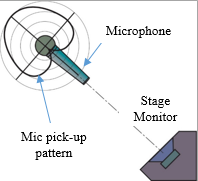By Ah-Keisha McCants

Designed by ET Green / Instagram
Just last month, Whitney Edwards, CAT CUNY Service Corps member and City College student, attended the Audio Engineering Society (AES) conference with our Sound Thinking cohort. She and Ah-Keisha asked attendees who visited their table at the Education and Career Fair to answer the question, “What does the phrase ‘Sound Thinking’ mean to you?”
The responses were sonically thoughtful and deep – as one might expect from audio professionals, students and sound aficionados. 🙂
Check out some notable AES responses below!
“The phase sound thinking means to me, that you’re always thinking zonally. You’re always thinking in terms of sound, even in terms of engineering, sciences, biology, you always relate everything back to sound. Everything comes in the way of sound, vibration, air, and moving.”
“I would say that means innovative ways of being creative with sound technology and pushing the limits, trying new things and not being afraid of the results.”
“When I think of sound thinking, I think of when you’re brainstorming with a clear mind and you’re really focused on what it is that’s on your mind, but at the same time not letting other distractions get in the way or anything else that could sort of take your mind off the prize.”
“I guess it means like your interpretation of sound and what it means to you as a person, as an individual. Sound Thinking is thinking in a whole different universe. You’re just floating on the sound meridian and you just are able to experience it in your mind.”
“Thinking more in-depth into sound and thinking with sound, in a way. Thinking more in depth and really listening to sounds and figuring stuff out.”
“Sound thinking sounds like a solid thought process because it is sound.”
“I think sound thinking is a form of language, where maybe words don’t work but instead let sound speak it for us. It’s quite understated because we still can’t define sound into words that is easy for anyone else to hear because it’s complicated and it’s a language that we have to decode. It speaks to those who don’t know how to comprehend it.”
“I […] think that Sound Thinking is something that we need to improve on because my mom is a hearing aid specialist and she would always remind us that those who are blind, can still communicate but those who are deaf it’s actually a lot harder and they get overlooked more so that’s why Sound Thinking is another form of communication that we all need to be aware of, like how we listen and also what we see, and how we can use sound to help those who don’t hear us.”
“The phrase sound thinking means to me, contemplating audiosonics and the various amplitudes that you may hear when you think of sound, or emotion and ambience. Sound thinking makes me think of sound in various ways.”
We’re curious about your thoughts. “What does the phrase ‘Sound Thinking’ mean to you?”
Share your answer(s) to the question in the comments section below.


